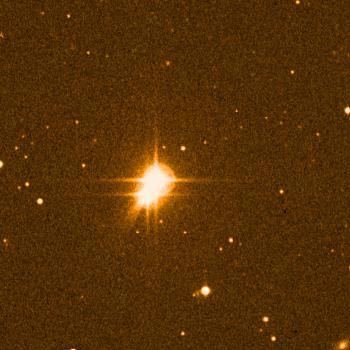Luminosity (bolometric) 0.418 ± 0.057 L☉ | Magnitude 6.49 | |
 | ||
People also search for Tau Leonis, Upsilon Leonis, Phi Leonis | ||
83 Leonis, abbreviated 83 Leo, is a binary star system approximately 58 light-years away in the constellation of Leo (the Lion). The primary star of the system is a cool orange subgiant star, while the secondary star is an orange dwarf star. The two stars are separated by at least 515 astronomical units from each other. Both stars are presumed to be cooler than the Sun.
Contents
In 2005, an extrasolar planet was confirmed to be orbiting the secondary star within the system.
In 2010 the second planet was discovered.
Stellar system
The primary component, 83 Leonis A, is a 6th magnitude star. It is not visible to the unaided eye, but easily visible with small binoculars. The star is classified as a subgiant, meaning that it has ceased fusing hydrogen in its core and started to evolve towards red gianthood.
The secondary component, 83 Leonis B, is an 8th magnitude orange dwarf, somewhat less massive (0.88 MSun), smaller and cooler than the Sun. It is visible only with binoculars or better equipment. Components A and B share common proper motion, which confirms them as a physical pair. The projected separation between the stars is 515 AU, but the true separation may be much higher.
There is yet another, magnitude 14.4 component listed in the Washington Double Star Catalog. However, this star is moving into a different direction and is therefore not a true member of the 83 Leonis system.
Planetary system
Planet 83 Leonis Bb was discovered in Jan 2005 by the California and Carnegie Planet Search team, who use the radial velocity method to detect planets. The planet's minimum mass is less than half of the mass of Saturn. It orbits very close to the star, completing one orbit in about 17 days.
In 2010 the second planet 83 Leonis Bc was discovered.
